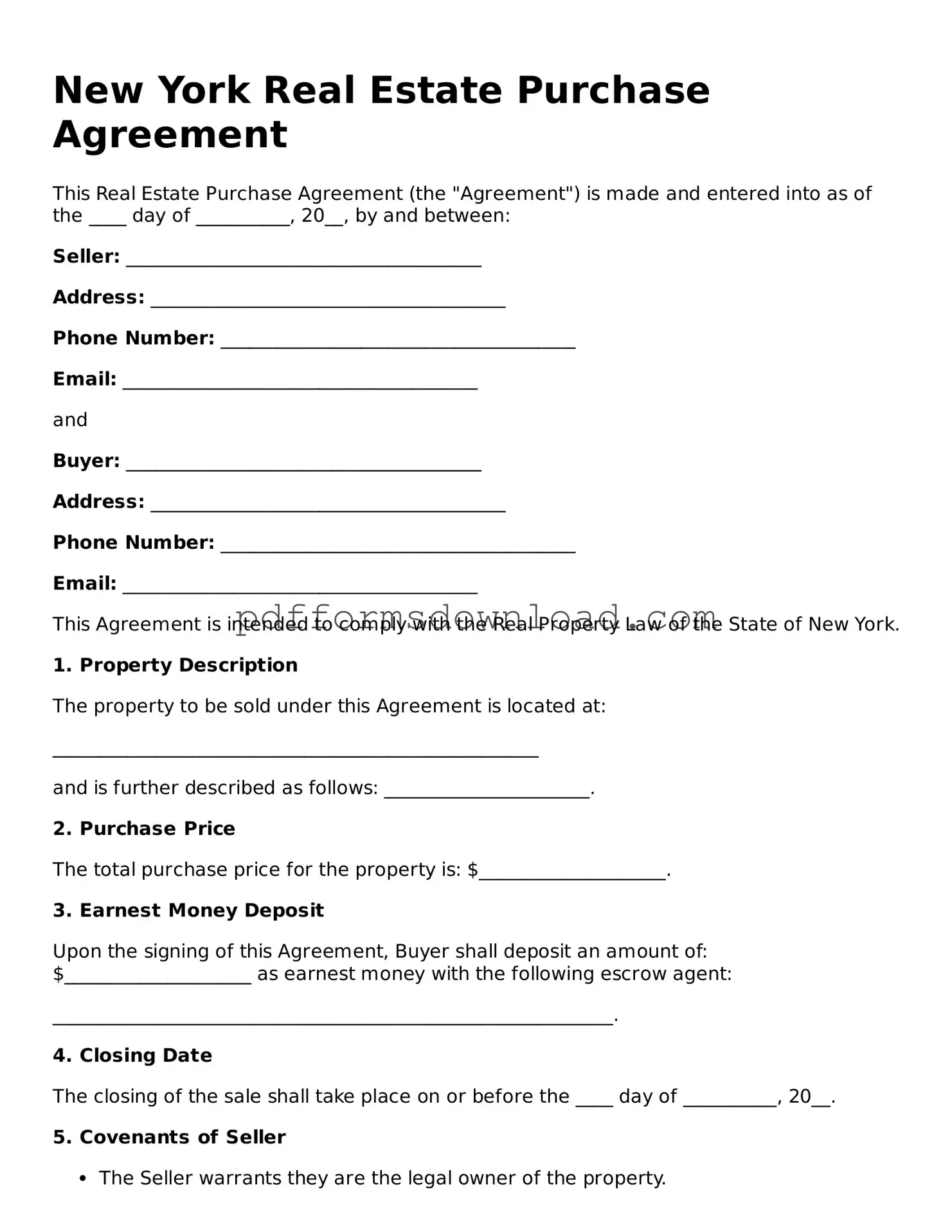What is a New York Real Estate Purchase Agreement?
The New York Real Estate Purchase Agreement is a legal document that outlines the terms and conditions under which a property is bought and sold. This agreement serves as a binding contract between the buyer and the seller, detailing important aspects such as the purchase price, property description, and closing date. It helps ensure that both parties understand their rights and obligations throughout the transaction process.
What key elements should be included in the agreement?
Essential elements of the agreement include the names and addresses of both the buyer and seller, a detailed description of the property being sold, the purchase price, and the terms of payment. Additionally, it should specify any contingencies, such as financing or inspection requirements, and outline the closing process, including dates and responsibilities. It's crucial to ensure that all terms are clear to avoid misunderstandings later.
Is it necessary to have an attorney review the agreement?
While it is not legally required to have an attorney review the Real Estate Purchase Agreement in New York, it is highly recommended. An attorney can help identify potential issues, ensure compliance with state laws, and protect your interests. They can also provide valuable advice on negotiations and any contingencies that may need to be included in the agreement.
What happens if one party fails to fulfill their obligations?
If one party does not fulfill their obligations as outlined in the agreement, the other party may have legal options available. This could include seeking damages or enforcing the contract through a lawsuit. The specific remedies available depend on the terms of the agreement and the nature of the breach. It's important to document any failures to perform to support any potential claims.
Can the agreement be modified after it is signed?
Yes, the New York Real Estate Purchase Agreement can be modified after it is signed, but any changes must be agreed upon by both parties. Modifications should be documented in writing and signed by both the buyer and seller to ensure clarity and enforceability. Verbal agreements or informal changes may not be legally binding.
What is the typical timeline for closing a real estate transaction?
The timeline for closing a real estate transaction in New York can vary, but it generally takes about 30 to 60 days from the signing of the purchase agreement. This timeline allows for necessary inspections, financing approvals, and title searches. Both parties should remain in communication throughout this period to ensure that all requirements are met and to address any issues that may arise.
